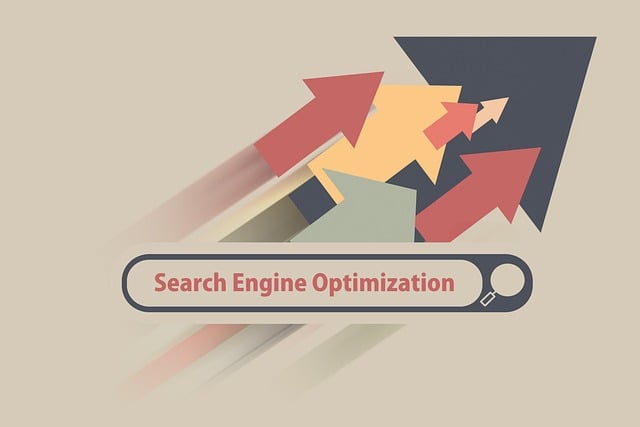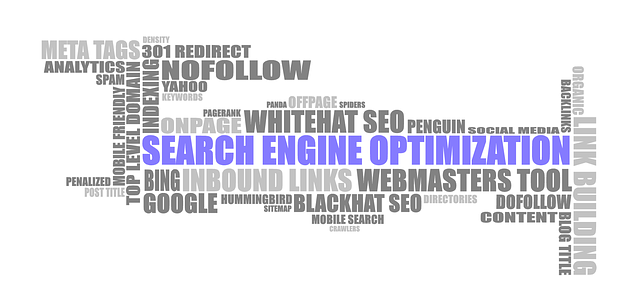On-Page SEO is a strategic approach to optimizing web pages for higher search engine rankings and relevant traffic. It involves tailoring content, structure, and elements like keywords in titles and headings, meta tags, page speed, mobile responsiveness, image optimization, internal linking, and compelling content to match user searches. Comprehensive keyword research using tools like Google Keyword Planner, SEMrush, or Ahrefs is vital for identifying high-volume search terms with manageable competition. Effective On-Page SEO also includes crafting engaging title tags (50-60 chars), informative meta descriptions (150-160 chars), using header tags (H1-H3) to create a structured hierarchy, and prioritizing readability. Internal linking guides search engines through content, improving site visibility and user experience, and boosting rankings over time.
On-Page SEO is a powerful strategy for boosting your website’s digital visibility. It involves optimizing individual web pages to rank higher and earn more relevant traffic in search engine results. This comprehensive guide delves into the core elements of on-page optimization, from understanding fundamental SEO principles to leveraging specific techniques like keyword research, meta tags, header tags, content creation, and internal linking. By mastering these strategies, you can enhance your website’s performance and connect with your audience more effectively.
Understanding On-Page SEO: The Foundation of Digital Visibility

On-Page SEO forms the bedrock of digital visibility for any website. It’s a strategic approach to optimizing individual web pages so that they rank higher and earn more relevant traffic in search engine results pages (SERPs). At its core, on-page optimization involves tailoring content, structure, and other elements to align perfectly with what users are searching for and what search engines aim to deliver.
This process encompasses a range of techniques, from choosing the right keywords and crafting compelling meta tags to ensuring page load speed and mobile responsiveness. By focusing on these factors, websites can send clear signals to search engines about their content’s relevance and quality. Consequently, this enhances their chances of appearing in top search positions, driving more organic traffic, and ultimately, boosting online visibility and business growth.
Key Elements of Effective On-Page Keyword Optimization

Effective on-page keyword optimization is a multifaceted strategy that forms the backbone of any successful On-Page SEO campaign. Firstly, conducting thorough keyword research to identify relevant and high-volume search terms is pivotal. These keywords then need to be seamlessly integrated into various elements of your webpage, including titles, headings, meta descriptions, and content bodies. Each element serves as a unique opportunity to signal to search engines the page’s relevance and context.
Additionally, optimizing images with alt tags and ensuring a clean, user-friendly URL structure are essential tactics. Internal linking also plays a crucial role in enhancing on-page SEO by enabling users and search engine crawlers to navigate your site effortlessly, thereby increasing the overall authority of each individual page.
Conducting Comprehensive Keyword Research for On-Page Strategy

Comprehensive keyword research is the bedrock of any successful on-page SEO strategy. It involves understanding your target audience and their search behaviors to identify relevant keywords that drive organic traffic. This process begins with tools like Google Keyword Planner, SEMrush, or Ahrefs to uncover a wealth of data on search volume, competition, and related keywords. By analyzing this data, you can discern high-value keywords with manageable competition levels, ensuring your content resonates with the right audience.
Moreover, keyword research should delve into long-tail keywords—phrases that are more specific and less competitive. These long-tails often reflect genuine user intent and can significantly improve your on-page SEO efforts by allowing you to create content that directly addresses user queries. Incorporating these keywords naturally throughout your meta tags, headings, and body copy not only enhances search engine visibility but also delivers a better user experience, ultimately boosting your site’s rankings.
Optimizing Title Tags and Meta Descriptions for Maximum Impact

Title tags and meta descriptions are critical components of on-page SEO, playing a significant role in search engine rankings and click-through rates. The title tag, often displayed as the page headline in search results, should be compelling and include your target keyword to capture the user’s attention and accurately represent the content. Crafting an effective title tag requires balancing keyword relevance with readability, ensuring it remains within 50-60 characters to avoid truncation.
Meta descriptions, on the other hand, provide a brief summary of the page content, typically appearing below the title in search results. While not directly ranked by search engines, meta descriptions can influence click rates as they give users a glimpse into what the page is about. Incorporating relevant keywords naturally within the 150-160 character limit can enhance both the description’s readability and its potential to attract clicks, driving more organic traffic to your website.
Leveraging Header Tags for Enhanced Readability and Search Engine Understanding

Header tags are a powerful tool in on-page SEO, serving as signposts for both readers and search engines. By structuring content with headers (H1, H2, H3, etc.), you create a clear hierarchy that highlights key topics and subtopics. This enhances readability, making it easier for users to scan and understand the page. Meanwhile, search engine crawlers interpret these tags as votes of confidence, signaling the importance of certain sections within your content.
Properly using header tags ensures your on-page SEO efforts are not just visible to humans but also understood by algorithms. The H1 tag should encapsulate the primary keyword and main topic, while subsequent headers provide structured support, each focusing on specific subthemes relevant to your content’s core. This practice not only improves search engine rankings but also fosters a more engaging user experience.
Crafting Compelling and SEO-Friendly Content that Engages Users

Creating content that captivates users and aligns with on-page SEO best practices is a powerful strategy for boosting online visibility. Go beyond mere keyword stuffing; focus on crafting narratives that resonate with your target audience, addressing their needs, questions, and interests. Engaging content drives user interaction, reduces bounce rates, and encourages visitors to spend more time on your site—all signals that search engines use to determine ranking.
Integrate keywords naturally within compelling headlines, subheadings, and throughout the body text while ensuring readability remains a priority. Optimize meta descriptions and alt tags for additional SEO gains. Remember, effective on-page SEO is about creating value for users, not manipulating algorithms. When your content is both informative and engaging, it builds trust with readers and search engines alike, fostering long-term success in an ever-evolving digital landscape.
The Role of Internal Linking in Strengthening On-Page SEO Performance

Internal linking plays a pivotal role in bolstering on-page SEO performance. By strategically connecting relevant pages within your website, internal links help search engines understand the hierarchy and relevance of content. This not only enhances the user experience by providing easy navigation but also allows search engine crawlers to access and index more pages, increasing the site’s visibility. When a page is linked internally, it signals to search engines that the connected page offers valuable, related information, leading to improved rankings for both pages over time.
Furthermore, internal linking contributes to a smoother distribution of link equity across your site. Link equity refers to the value passed between pages when one links to another. By interconnecting relevant pages, you ensure that the authority and trust earned from external backlinks are shared throughout your website, strengthening each page’s on-page SEO. This is particularly crucial for larger websites with diverse content, as it helps maintain consistency in search engine rankings across different pages and topics.
